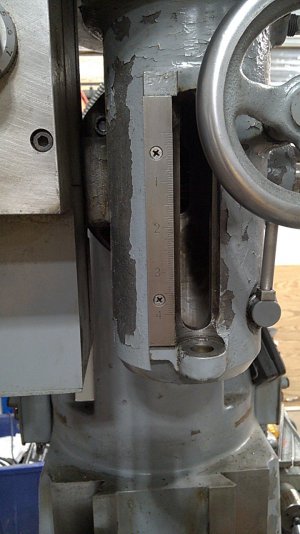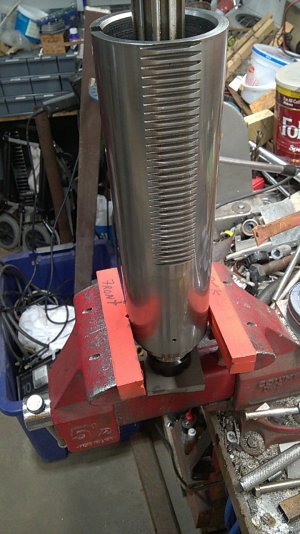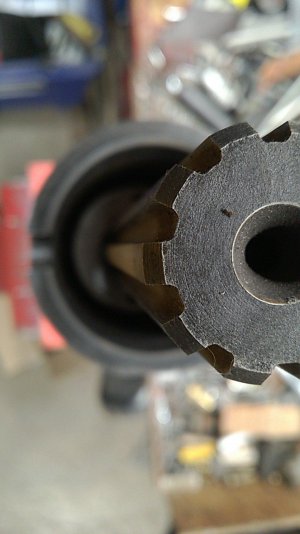Finally got the mill on caster/feet and moved into place. Got power run to it and have been going through the manual, cleaning and lubing and testing.
Put an optical tachometer on it and found the VFD calculated RPMs to be pretty darned close. Moved the belts up into high range and tested there as well. Still pretty close, runs just a few RPM faster than stated on the belt chart, which is only approximate anyway.
But after running for 10 minutes at full speed the spindle was getting hot. I could hang onto it, but could tell that something was wrong. I had topped off the oil as specified and let the oil drip out of the drain hole. However it looked much darker than the new oil (Velocite #10) going in. The manual states that too much oil can cause over heating. I figured out a way to "flush" by overfilling, spinning up for a minute and then draining the excess. Did this until it started looking mostly like the new oil.
Waited for everything to cool down and drain as per the book, then did another 10 minute test. Same thing, gets hot.
Looking at the captured excess fluid I can see little sparkles in it, and they respond to a magnet. So one or more bearings is making metal.
The parts book shows the bearings and the original Timken numbers (YAY!). And a number for the seal so I have info to take to the bearing house.
My big question is how does one go about replacing the bearings? It would appear that you take the quill feed apart and the quill should drop out of the bottom end of the head. Does anyone know if that is correct? BTW, this machine has the power down feed on the head although the rest of it is missing. That does not look too complicated, but I have no experience with this level of maintenance.
Has anyone ever seen a service or repair manual for these machines?
Any help, hints, or suggestions are appreciated. Even old wives tales or bearing fishing stories.
Thanks,
Stuart
Put an optical tachometer on it and found the VFD calculated RPMs to be pretty darned close. Moved the belts up into high range and tested there as well. Still pretty close, runs just a few RPM faster than stated on the belt chart, which is only approximate anyway.
But after running for 10 minutes at full speed the spindle was getting hot. I could hang onto it, but could tell that something was wrong. I had topped off the oil as specified and let the oil drip out of the drain hole. However it looked much darker than the new oil (Velocite #10) going in. The manual states that too much oil can cause over heating. I figured out a way to "flush" by overfilling, spinning up for a minute and then draining the excess. Did this until it started looking mostly like the new oil.
Waited for everything to cool down and drain as per the book, then did another 10 minute test. Same thing, gets hot.
Looking at the captured excess fluid I can see little sparkles in it, and they respond to a magnet. So one or more bearings is making metal.
The parts book shows the bearings and the original Timken numbers (YAY!). And a number for the seal so I have info to take to the bearing house.
My big question is how does one go about replacing the bearings? It would appear that you take the quill feed apart and the quill should drop out of the bottom end of the head. Does anyone know if that is correct? BTW, this machine has the power down feed on the head although the rest of it is missing. That does not look too complicated, but I have no experience with this level of maintenance.
Has anyone ever seen a service or repair manual for these machines?
Any help, hints, or suggestions are appreciated. Even old wives tales or bearing fishing stories.
Thanks,
Stuart




